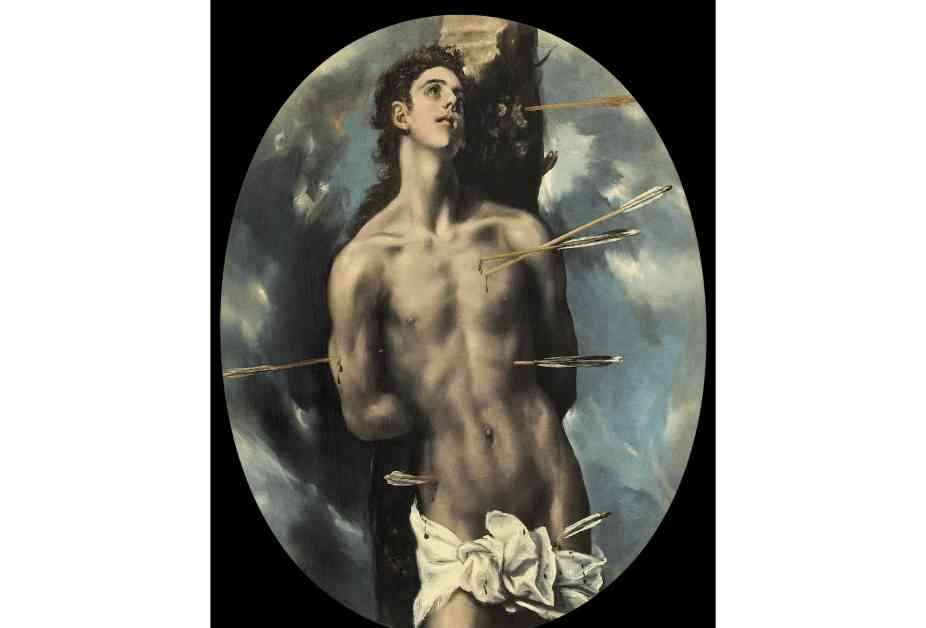El Greco’s masterpiece, Saint Sebastian, has been at the center of a legal battle between Christie’s and the Romanian government. The painting, valued at $7 million to $9 million, was set to be the highlight of an upcoming Old Masters sale in New York. However, the Romanian government intervened, claiming ownership of the artwork and successfully blocking its auction.
The Romanian Prime Minister, Marcel Ciolacu, along with a team of lawyers, took swift action to prevent the sale of Saint Sebastian. Reports from Romania Insider indicated that the government is pursuing legal action through the Paris Judicial Tribunal. This move has effectively put a halt to the sale, causing Christie’s to withdraw the lot from the upcoming auction.
Christie’s spokesperson addressed the situation, stating, “We received an inquiry about the work. Christie’s takes these matters seriously and out of an abundance of caution is withdrawing the lot at this time. We look forward to selling this unique and spectacular work at a later date.”
The saga surrounding Saint Sebastian’s ownership dates back over a century. Originally acquired in 1898 by King Carol I of Romania, the painting was later bequeathed to the Royal Crown of Romania. Subsequent transfers of ownership led to its eventual placement in the hands of Wildenstein & Co. gallery in New York in 1976. The art advisory group Giraud Pissarro Segalot acquired the painting for an anonymous collector in 2010, but details of its whereabouts in the intervening years remain unclear.
The Romanian government’s efforts to reclaim ownership of the El Greco painting have been detailed in an official ministerial document. The memorandum outlines the steps to be taken, including civil and criminal procedures, to establish rightful ownership. Prime Minister Ciolacu hailed the success in blocking the auction as a victory for the Romanian state, expressing confidence in the eventual recovery of the painting.
Legal Battle Unfolds
The legal dispute over Saint Sebastian underscores the complexities of art ownership and provenance. As the Romanian government asserts its claim to the painting, questions arise about the timeline of its ownership and the legal implications of transferring such valuable artworks across borders. The involvement of prestigious auction house Christie’s adds another layer of intrigue to the unfolding drama, highlighting the delicate balance between art commerce and national heritage.
Expert art historians and legal scholars may provide valuable insights into the intricacies of art repatriation and the challenges associated with proving ownership of historical artifacts. The case of Saint Sebastian serves as a poignant example of the enduring legacy of cultural heritage and the ongoing efforts to preserve and protect valuable works of art.
Implications for the Art Market
The impact of the Romanian government’s intervention in the sale of El Greco’s painting reverberates throughout the art world. Auction houses, collectors, and art enthusiasts alike are closely watching the developments surrounding Saint Sebastian, awaiting the resolution of this high-profile dispute. The potential implications for future art sales and legal battles over ownership rights underscore the significance of this case as a precedent-setting event.
Art market analysts may weigh in on the broader implications of such disputes for the valuation and sale of art masterpieces. The delicate balance between private ownership and national heritage preservation comes into sharp focus as governments and art institutions navigate the complexities of art repatriation and restitution. The outcome of the Saint Sebastian case may set a precedent for future claims of ownership and the legal frameworks governing the global art market.
In conclusion, the battle over El Greco’s Saint Sebastian represents a compelling intersection of art, history, and legal intricacies. The unfolding drama captivates audiences with its high stakes and complex narratives, highlighting the enduring value of cultural heritage and the ongoing efforts to safeguard priceless works of art for future generations. The resolution of this case will undoubtedly shape the trajectory of art ownership and restitution in the years to come, leaving a lasting impact on the art world as a whole.












